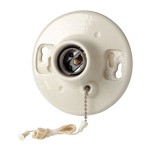Essential Aspects of Adding a Ceiling Light
Upgrading your lighting can dramatically transform the ambiance and functionality of a room. Adding a ceiling light is a particularly effective way to enhance illumination, create a more inviting atmosphere, and increase safety. Here are some crucial aspects to consider when adding a ceiling light to your home:
1. Lighting Requirements
Before selecting a ceiling light, determine the lighting needs of the room. Consider the size, shape, and usage of the space. A larger room may require multiple light sources, while a smaller room may only need one central fixture. Also, think about the desired brightness level and whether you want ambient, task, or accent lighting.
2. Fixture Type
Ceiling lights come in various types, each with its unique design and function. Some popular options include chandeliers, pendants, flush mounts, and recessed lights. Chandeliers are elegant and opulent, while pendants offer a more modern look. Flush mounts are low-profile and ideal for rooms with low ceilings, and recessed lights provide discreet and evenly distributed lighting.
3. Material and Finish
The material and finish of the ceiling light should complement the room's décor. Metal fixtures are durable and sleek, while glass fixtures add a touch of elegance. Choose a finish that matches the hardware, furniture, and other fixtures in the room. For example, brass fixtures pair well with traditional or vintage interiors, while chrome or nickel finishes suit contemporary spaces.
4. Electrical Considerations
Adding a ceiling light requires proper electrical wiring and installation. It's highly recommended to hire a licensed electrician to ensure the work is done safely and according to building codes. The electrician will determine the appropriate wiring size, junction boxes, and switches for the new fixture.
5. Installation Height
The installation height of the ceiling light affects the overall lighting effect. For ambient lighting, the fixture should be placed high enough to create a diffused and even glow. For task lighting, the fixture should be positioned closer to the work surface to provide adequate illumination. Refer to the manufacturer's instructions or consult an electrician for guidance on the recommended installation height for your specific fixture.
6. Maintenance
Ceiling lights require periodic maintenance to ensure proper functionality and longevity. Dusting the fixture regularly will help maintain its appearance and prevent dust accumulation. You may also need to replace bulbs or clean the shade or diffuser from time to time. Refer to the manufacturer's recommendations for specific cleaning and maintenance instructions.

Add Lighting With Little Or No Damage Fielder Electric

Adding Overhead Lighting Extra S Young House Love

Adding Overhead Lighting Extra S Young House Love

Clever Ways To Add Light A Room Without Wiring
Adding Ceiling Light Diy Home Improvement Forum

Adding Wall Switch And Another Ceiling Light Loop Controlling 2 Fixtures Doityourself Com Community Forums

How To Change A Ceiling Light Making Maanita

Diy Drum Ceiling Light Upcycle Houseful Of Handmade

Rewire A Switch That Controls An To Control Overhead Light Or Fan

Choosing Between Wall Lights Vs Ceiling Seascape Lamps
Related Posts








